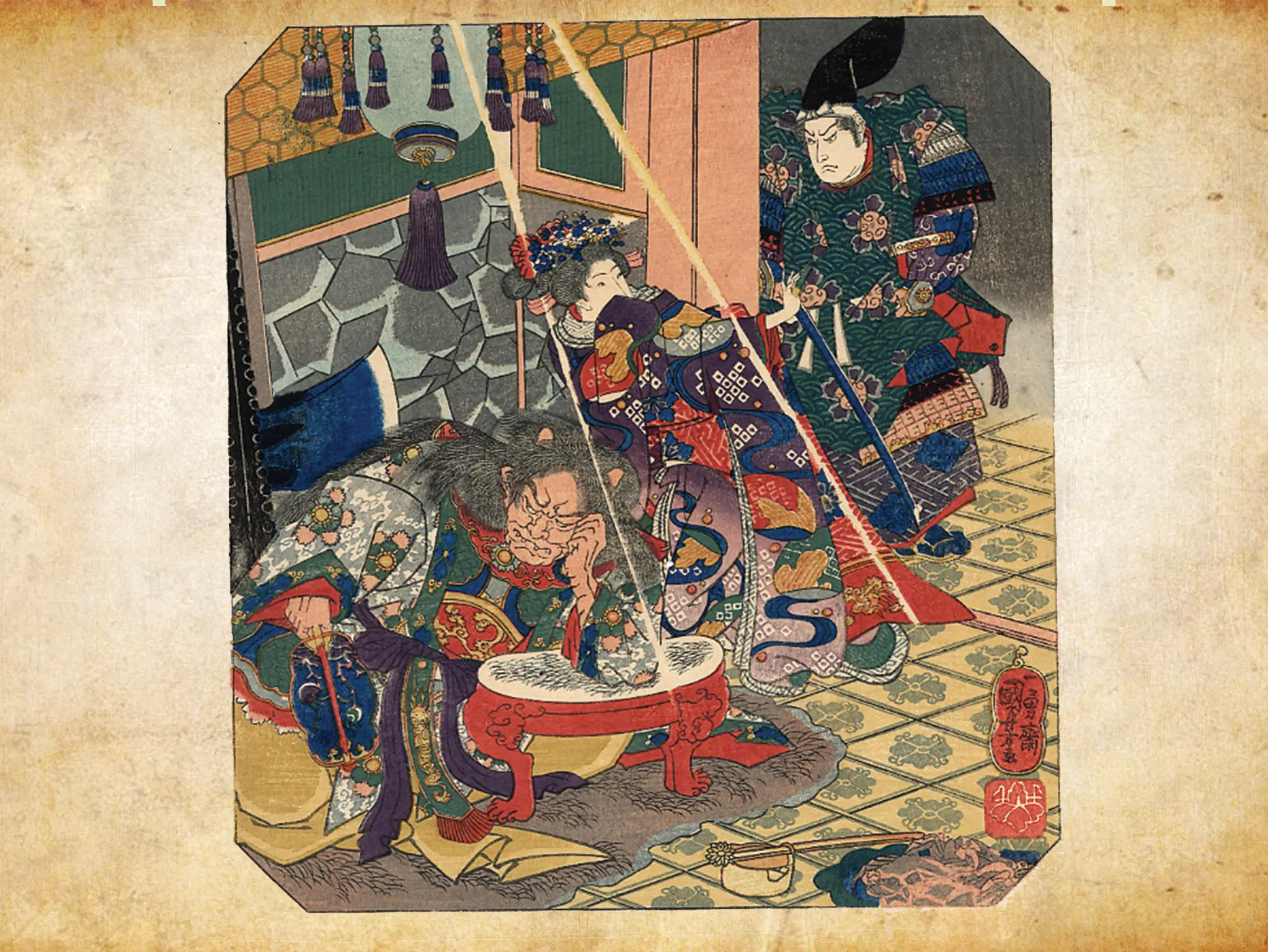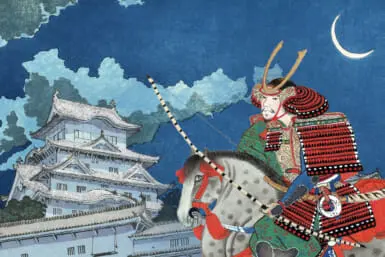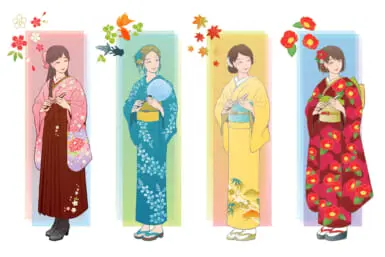Japanese folklore is full of tales of daredevil bandits, terrifying demons and celestial beings descending from the heavens to aid humanity. Most of them are not about the same character, though. In fact, only one figure from Japanese myths and legends has been portrayed as a thief, an oni and an angel. Her name was Suzuka Gozen. This is … Sorry. These are her wildly diverging stories.
A Being From the Land of Duality
The Suzuka Mountains in central Japan stretch from Mie Prefecture along the borders of Gifu and Shiga. Today, they are a picturesque spot popular with hikers, but a thousand years ago, they were especially popular with bandits attacking merchants. The robbers were primarily after highly prized mercury being transported from Ise, also home to Japan’s most important Shinto shrine, or imperial tributes heading to Kyoto.
Another interesting thing about the outlaws — they were led by a woman. Historical records from the 13th century confirm that the Suzuka band once had a female leader, a reportedly beautiful 28-year-old who came to be known as Tate Eboshi. The moniker came from the name for a formal kind of noble headgear the brigand wore as a trophy or to mock the Imperial Court trying to bring her in.
However, besides robbers, the Suzuka range was, apparently, also full of mystical energy. Mountain ascetics, tech-wizards and shrine maidens used to travel to the area to perform purification ceremonies, making the land fertile ground for myths and legends. It might explain why stories of Tate Eboshi soon became more and more outrageous until the figure grew into the outlaw queen who lived in a secret palace deep in the mountains. And since she had control over life and death (by deciding whom to attack and with what level of severity), she eventually gained the status of a quasi-deity who could, people reckoned, also protect travelers on their journeys.
Suzuka Gozen’s Guide to Divorce
When myths of other fantastical female figures emerged in the area, the people of Suzuka evidently decided that Tate Eboshi didn’t seem like the kind to share her turf, so all these newcomers had to have been her! Using different names! This is most likely how the myths of Suzuka Gozen (aka Suzuka Gongen or Suzuka-hime) got all tangled up with tales of Tate Eboshi — though it wasn’t exactly a big leap from a murderous mountain marauder to a demoness, which is how Gozen was portrayed around the 15th century.
Though she was using a different name, she appears to have kept Tate Eboshi’s good looks. That’s why, according to legend, when Sakanoue no Tamuramaro (758–811 CE) — one of the earliest shoguns in Japanese history and a legendary demon hunter — first spotted Gozen up in the Suzuka Mountains, he immediately fell in love with the oni.
Unfortunately, in the earliest version of the story, Gozen was already married to the terrifying Otakemaru, one of the Three Great Yokai (supernatural creatures of Japanese mythology) and the demon king of Suzuka. Standing 10 meters tall and able to control the weather, he was Sakanoue no Tamuramaro’s real target during his mission to this part of central Japan.
Fortunately, Otakemaru and Gozen’s marriage apparently wasn’t a happy one, so she decided to get a divorce by helping the general decapitate her husband. Tamuramaro technically later had to tie Gozen up and present her at court as a trophy of his demon hunt, but the emperor was so happy with Otakemaru’s death that he let Tamuramaro keep his wife. The couple then moved to the Suzuka Mountains and lived happily ever after — until more stories of Suzuka Gozen emerged.
Angels and Demons
In later retellings of the myth, Suzuka Gozen died shortly after her wedding at the age of 25. After what Tamuramaro went through to win her heart, though, he wasn’t taking any of that “till death do us part” nonsense, so he journeyed to the underworld and brought his wife back. Now technically a zombie, the resurrected Gozen lived to the ripe old age of 103, after which her body was carried off by a magical white snake.
A white snake? Why, that’s the symbol of the goddess Benzaiten. Surely, she wouldn’t send one of her messengers for an oni. This was all the proof people needed that Suzuka Gozen wasn’t actually a bandit or a demoness but a tennyo celestial maiden (basically an angel). This required a few tweaks to her mythology.
Obviously, an angel wouldn’t let a guy she just met murder her husband. So, in the most popular versions of her story, Suzuka Gozen descends from heaven and seeks out Sakanoue no Tamuramaro to help him defeat Otakemaru, who here has been reimagined as a sex pest always disguising himself as a beautiful noble and proposing to her, without success.
This Gozen was described as a beautiful young woman wearing a resplendent junihitoe formal court dress and gold and silver ornaments in her hair. She apparently could also predict the future, read people’s minds and owned a flying chariot. That’s her modern image, but who knows how she’ll be portrayed in the future. Give it a few more centuries, and we may find out that Suzuka Gozen was, in fact, one of those terrifying Japanese mermaids — or maybe even the Nun Shogun herself.
Everyone is always searching for their true identity, but Suzuka Gozen is especially lucky in that department: She gets multiple options.









